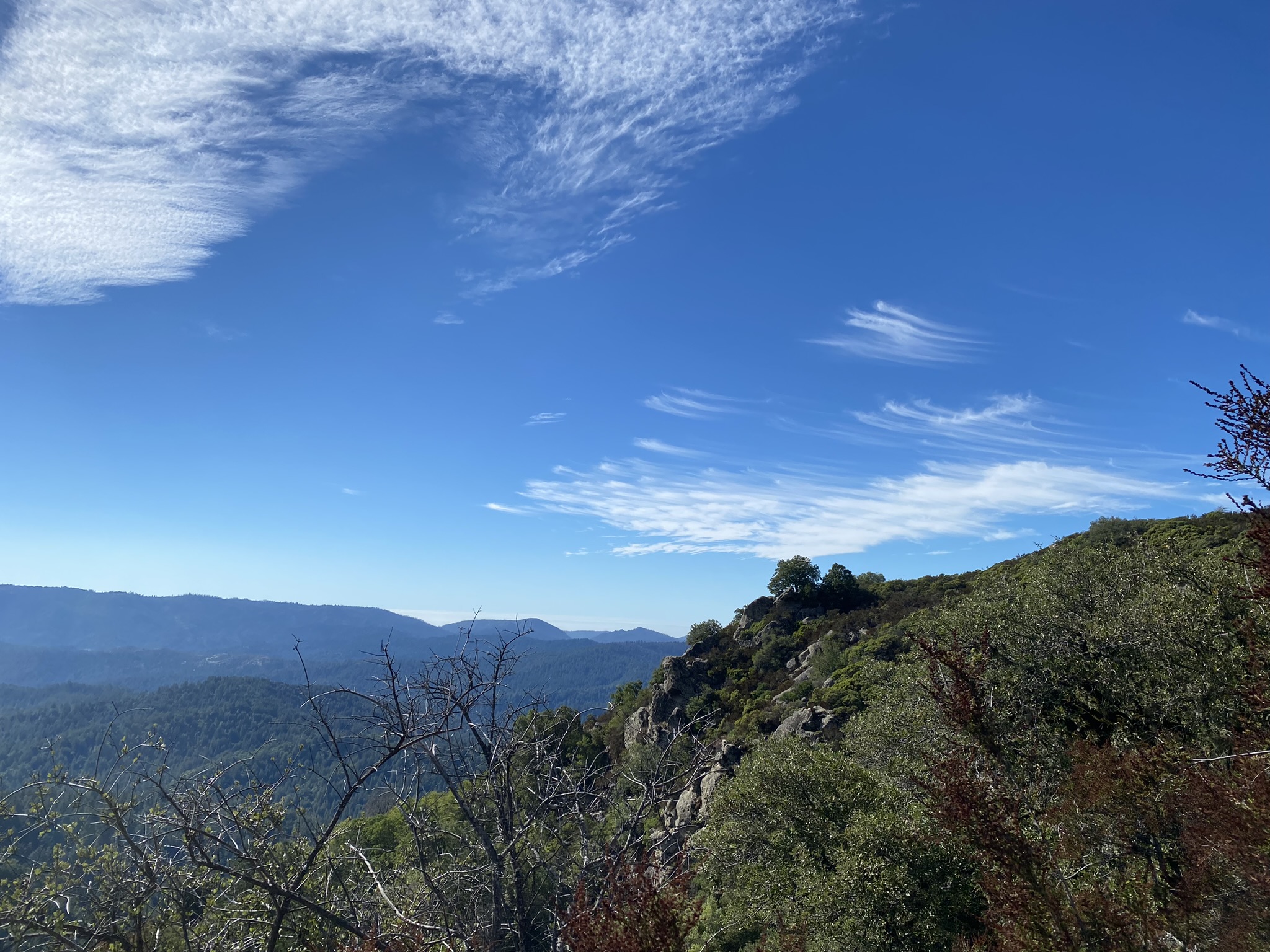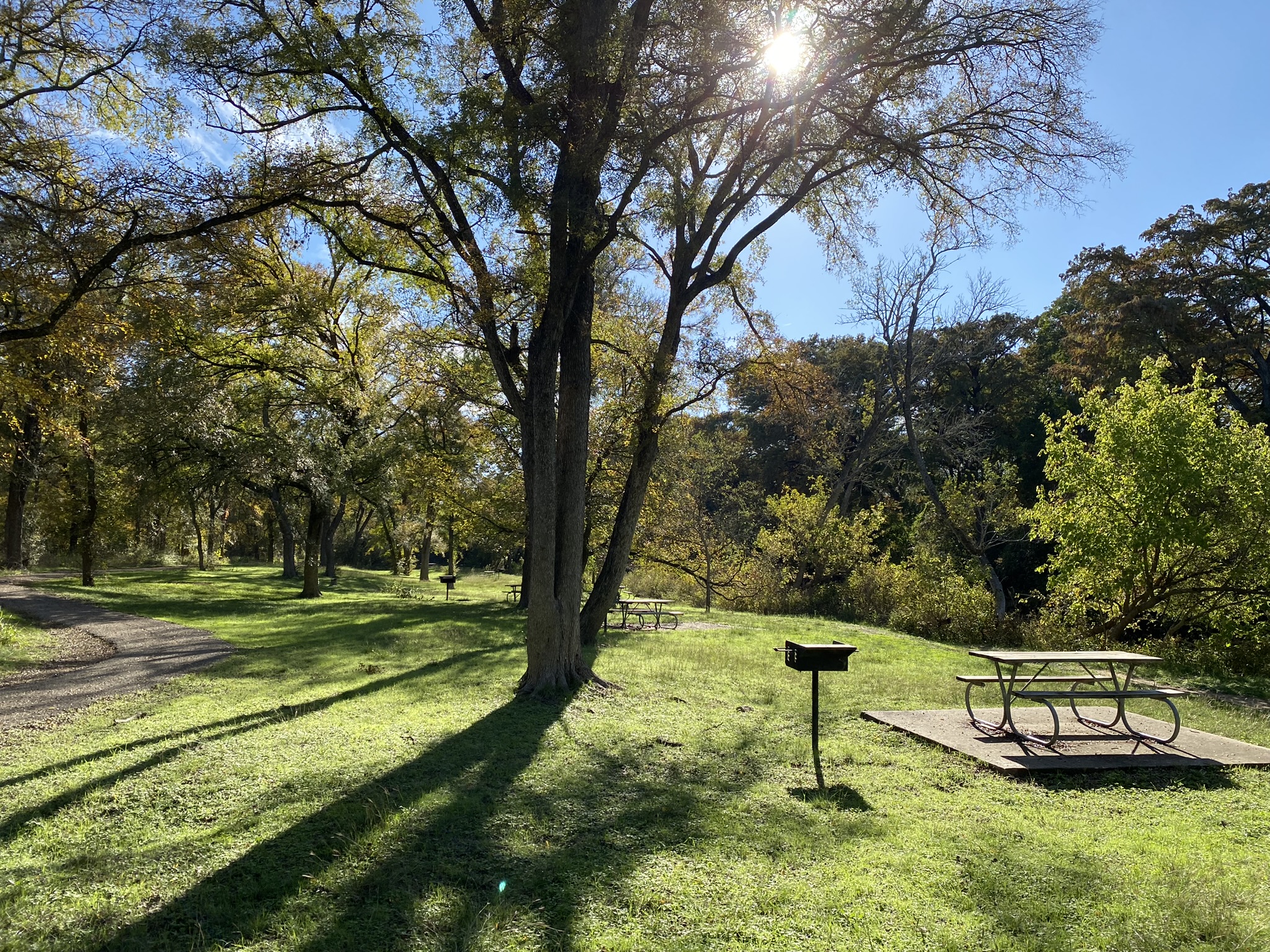Comparing my first two POTA activations
I made my first two POTA activations in November 2023. The first activation was by myself at Castle Rock State Park (K-1136) in the Santa Cruz Mountains in California, 20m QRP CW only. The second activation was with N5YAN and KJ5CYM at McKinney Falls State Park (K-3038), operating as both the UT Amateur Radio Club (N5XU) and myself (N5EIF), 20m SSB at 50 W and CW at 5 W. The same antenna was used for both activations, but only comparing QRP CW contacts, I made just 14 QRP CW QSOs in the first activation, but made 68 in the second one.
Both POTA activations were a great deal of fun and a big success, but it would be interesting to explore the differences in timing, location, and equipment that could account for some of the differences in the number of QSOs made. Since I operated 20m QRP CW with the same vertical antenna at both sites, some other factors are easier to notice.
Castle Rock State Park (K-1136, grid CM87wf)
Castle Rock State Park is nestled in the Santa Cruz Mountains, southwest of Cupertino and Saratoga, CA in the South Bay. There are miles of hiking trails which afford some excellent views of the park and surrounding areas.
For my first POTA activation, I decided to put everything into a backpack. I reached the park later than I wanted to, around 10:15-10:30 am local time. The weather was partly cloudy and a crisp 60 degrees, perfect for a nice morning walk. I took an IC-705 and Wolf River Coils vertical for 20m, along with the N0SA SP4 key. I hiked about a mile or two from the main parking area to some picnic tables near Goat Rock, in grid CM87wf, where I set everything up. The antenna fit nicely in a 16x16 clearing near a table. The station was very simple:
- IC-705 at 5 W
- WRC vertical, 1/4 λ at 20m, with three 16 foot radials
- 15 feet of RG-58 cable directly from the vertical to the 705
The very first thing I noticed was that the noise floor was at least 10 dB lower than my home QTH, so I could hear many more stations, including those that were near the noise level. I started calling CQ at about 1815z, which was 11:15am local time, at 5 W, with the keyer set to 20-22 wpm. It took at least 10 minutes to get my first QSO, with K6NIA, who I had told earlier about my POTA plans. There was only marginal cellular internet service at that location, so I had trouble spotting myself at pota.app. Eventually, either someone else spotted me or I spotted myself, and I appeared on the site. The QSOs trickled in slowly. I sometimes made QSOs one after another, but there were long lulls in which I called CQ and didn't make any QSOs.
Eventually, I decided to stop calling CQ and try to "search and pounce" a little. I even made a ragchew QSO. I stopped at about 1945z, which was 12:45pm local time, to pack up and get lunch. I operated for about 90 minutes total and made just 14 QSOs.
This was a lot of fun and a successful activation, both for POTA credit, and for the short hike and enjoyable experience. But I was expecting more QSOs. When I got home, I checked RBN to see where my signal was going, and it turned out 20m was very short, so I was only heard near the west coast.
McKinney Falls State Park (K-3038, grid EM10de)
McKinney Falls State Park is in south Austin, TX, near the AUS airport. There's a number of internal roads for easy access to campgrounds, picnic tables, and trails on the south side of the park.
I met up with N5YAN and KJ5CYM at about 2000z, which was 2pm local time. We drove near a set of picnic tables next to Onion Creek, and set up the same WRC vertical and radials as used in my first POTA activation, but used N5YAN's FT-891 for the first QSOs, which were all 20m sideband. We used the UT Amateur Radio Club's call N5XU, and this was the other ops' first POTA activation. N5YAN and KJ5CYM made most of the 42 SSB QSOs, all at 50 W. We all had a blast.
When the others were getting ready to leave, I set up the IC-705 with the same key as before and called CQ at 22 wpm CW, 5 W into the same vertical, at 2112z. In 10 minutes, I made 8 QSOs as N5XU, and then decided to switch to my own call since I'm not a current UT club member. From 2131z to 2317z, in about an hour and 45 minutes, I made 62 QSOs as N5EIF (two dupes). That's a little more than one QSO every two minutes, a lot better than my first activation.
There were a few things I noticed about these QSOs. Sometimes, people would
give up after just calling once, even though I could hear them just fine,
when I called a different station. Many would call at a reasonable offset
from my frequency, and that made it very easy to pick their signal out from
others. But most of all, it looked like many stations were not willing to
repeat info when I asked questions like QTH? or even PSE QTH AGN?. This
isn't really necessary, but I like to know where a calling station is
located, even if the location is as coarse as a state. This isn't a big
deal, so next time, I'll have to hold off on the questions and just give a
RR TU 73 N5EIF E E if it was a valid QSO.
It was also great to hear weaker stations calling me also, since the noise
level at this park was also low, and I could copy weaker stations just
fine. Copying weaker stations helps me to practice as well. I tried to
encourage more people to call by adding a QRP in my CQ, like
CQ POTA CQ POTA DE N5EIF N5EIF QRP K
when doing a longer CQ if nobody has been calling for a while, but I'm not sure if that adds much at all.
When I got home, I checked RBN again, and it turns out my 20m signal was heard all around the USA and the Caribbean. It makes sense why I made many more QSOs.
Conclusion
Both activations were successful, but just looking at the QRP CW QSOs might enable some better apples-to-apples comparisons. Here are some differences I notice, which may or may not have contributed to the QSO rate.
- Propagation on 20 meters. At Castle Rock, 20m was short, and I couldn't cover as much of the USA as I would have liked. At McKinney Falls, 20m provided good propagation to most of the USA.
- Timing. The Castle Rock activation somewhat ended up overlapping with lunch time for much of the stations I could reach, whereas the McKinney Falls CW QSOs were between 3-5pm local, which captured much more of the non-lunch afternoon.
- Terrain. There was a hill within 30 feet of my antenna at Castle Rock, which might have been suboptimal. On the other hand, the picnic tables near Onion Creek at McKinney Falls were in a relatively flat clearing, though with 30' trees peppering the area. The ground near the creek might have also been better.
Both POTA activations were a lot of fun, and I would like to try Castle Rock again with some of these ideas in mind.


